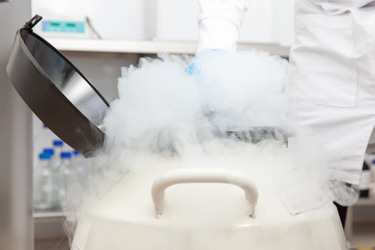Reducing Adverse Events And Improving Outcomes During And After Cell and Gene Therapy With DMSO-Free, Non-Toxic Cryopreservation
By Arthi Shridhar, X-Therma

Cryopreservation for cell and gene therapies has long been a crucial consideration for drug developers and manufacturers. These modalities require unique formulation approaches in order to preserve their therapeutic properties at every processing step, from isolation, expansion and fill/finish to storage, transport, and administration.
Despite the value of these biologics and the innovations surrounding their therapeutic potential, the cryopreservation techniques that typify these treatments have remained largely unchanged in several decades. The cryoprotectant dimethyl sulfoxide (DMSO) remains the incumbent method for regulating ice formation during the freezing process, in spite of its relative toxicity and documented propensity for inducing irreversible chromosomal and other intracellular damage. These concerns exist alongside growing recognition from the industry that DMSO can also serve to limit pre-freeze and post-thaw incubation times, creating the potential for processing bottlenecks and product loss.
As more concerns involving the use of DMSO as a cryoprotectant emerge, researchers and contract development and manufacturing organizations (CDMOs) have begun pursuing non-toxic and process-friendly alternatives. Products such as XT-Thrive®️, a bio-inspired, chemically defined cryoprotectant, have been demonstrated to improve on the safety profile of cell therapies when compared to serum-containing or serum-free brews containing 10% DMSO alongside other buffers. These non-DMSO products have also been demonstrated as generating comparable yields of clinically relevant and sensitive cell types including hematopoietic stem cells and iPSCs with retained functionality.
Get unlimited access to:
Enter your credentials below to log in. Not yet a member of Cell & Gene? Subscribe today.
